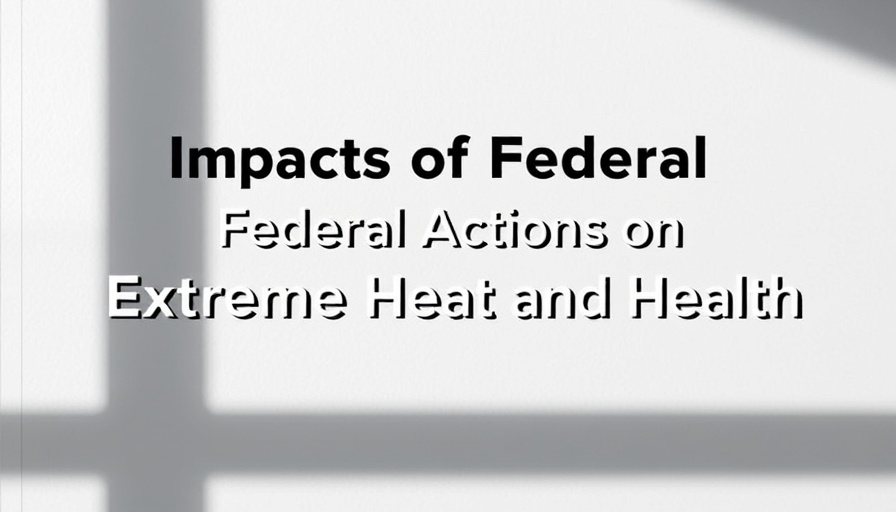
Understanding the Effects of Extreme Heat on Health
Extreme heat is not just an inconvenient weather phenomenon; it threatens lives and exacerbates health disparities in communities across the United States. As climate change continues to escalate, 2024 has already set records, with 2025 predicted to follow suit as one of the hottest years. Rising temperatures are not just a distant memory but a present reality that demands immediate attention.
The Disproportionate Impact of Heat on Vulnerable Communities
Research shows that the effects of extreme heat are felt most heavily by marginalized populations, including low-income individuals, people of color, and immigrants. From 1999 to 2023, the number of heat-related deaths soared by an astonishing 117%. In 2023 alone, this led to over 2,300 unnecessary fatalities—many of which could have been prevented with adequate protective measures.
Moreover, American Indian or Alaska Native and Black communities are especially vulnerable; they’ve been shown to experience a higher risk of heat-related deaths compared to White populations. This ongoing climate crisis isn't just a matter of weather; it's a matter of health equity, which has become increasingly critical as the federal government rolls back significant climate-related programs and initiatives.
Federal Actions and Their Fallout
In recent years, federal actions under different administrations have significantly influenced climate policy and, consequently, public health outcomes. While prior administrations took steps to mitigate climate change impacts, recent federal rollbacks—particularly under the Trump administration—have undermined critical climate protections aimed at promoting health equity.
By dismantling key offices responsible for climate preparedness and removing valuable data tools, these rollbacks have not only hampered the assessment of extreme heat—but have also widened existing health disparities among the nation’s most vulnerable communities. As reported, the effects of eliminated federal programs may cost the U.S. economy an astonishing $14.5 trillion over the next fifty years if left unaddressed.
State-Level Interventions: A Mixed Bag
In response to the growing crisis, some states have taken proactive measures to curb heat-related illnesses. These local initiatives can provide essential protection and lay the groundwork for broader standards. However, without cohesive federal guidelines, the effectiveness of these measures varies significantly by state, creating a patchwork of protections that may leave many at risk.
For instance, states that have enacted heat health action plans and established cooling centers or public awareness campaigns are stepping up their games. Yet, these efforts are often limited by funding constraints and lack of coordination, exacerbating the issue as many remain unaware of the risks associated with extreme heat.
The Economic Burden of Climate Inaction
The economic implications of climate inaction are staggering, particularly concerning healthcare costs. It’s estimated that heat events contribute to approximately $1 billion in excess healthcare expenses each year in the United States alone. This burden falls disproportionately on low-income populations, who may lack access to preventative healthcare services or suffer from underlying health conditions that make them more susceptible to extreme heat.
Investing in climate preparedness and health initiatives could mitigate some of these costs and save lives. More aggressive federal actions to enhance infrastructure, increase funding for vulnerable communities, and promote accessible health services will be crucial in protecting future generations.
Building Resilience Together
As communities face increasingly extreme weather patterns, solidarity becomes less a sentimental notion and more of a necessity. Engagement in grassroots initiatives and local preparedness can foster resilience. Neighborhoods coming together to create cooling centers, share resources, or simply educate one another about the dangers of extreme heat offer a powerful counter-narrative to the dismal forecasts of climate change effects.
Moreover, awareness is key; as communities get informed about heat risks and the importance of federal advocacy for climate policies, they can work toward influencing legislation that supports health equity and environmental protection.
The links between climate change, extreme heat, and public health cannot be ignored or understated. These factors work in tandem to create a complex web of risk, but with increased awareness and action, it’s possible to forge pathways to safer futures—and perhaps even healthier ones.
 Add Row
Add Row  Add
Add 




Write A Comment